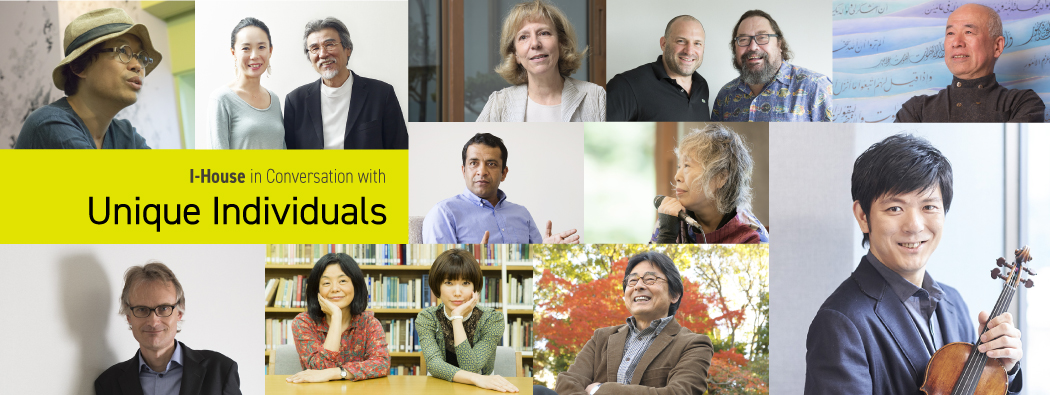Contemporary art is often regarded as incomprehensible and intimidating. Yet examined more closely in relation to economics and politics, a number of aspects of society and culture come into focus. We invited a leading curator and a prominent collector to discuss the contemporary art scene in Asia and Japan from their respective vantage points.
[March 2015]
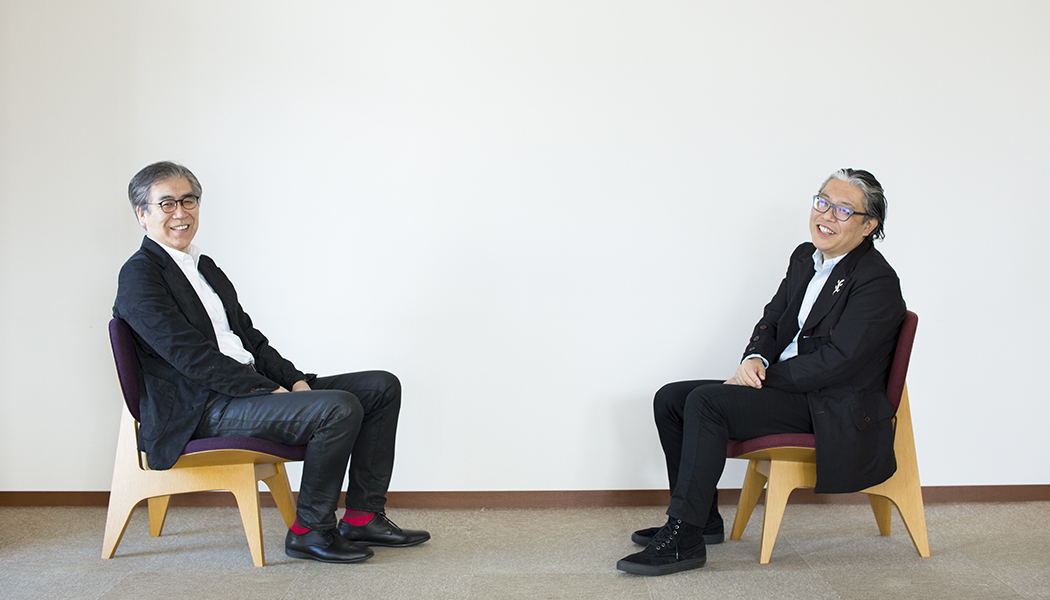
Born in Tokyo in 1949. Director of the Mori Art Museum; curator. Appointed to his present position in 2006 after having worked for a major Japanese bank and the Japan Foundation. He has been director of a number of major international art exhibitions. In 2007 he was awarded the Foreign Minister’s Commendation for his contributions to international communication through art.
Born in Tokyo in 1963. Art collector. Miyatsu has amassed a collection of some 400 artworks while working as a regular corporate employee. In 2011 he mounted exhibitions of his collection in Taiwan and South Korea. While lecturing at art exhibitions and museums in and outside Japan, he teaches as a visiting faculty member at the Kyoto University of Art and Design.
Collectors as Custodians of Culture
Nanjo Fumio: Miyatsu-san, you built your house in collaboration with artists, didn’t you?
Miyatsu Daisuke: I am an ordinary “salaryman,” so I don’t have millions of yen to spend on artworks. Therefore, I thought if I could make my house itself a work of art, I could kill two birds with one stone—and be able to live with my art.
The house itself was designed by Dominique Gonzalez-Foerster; Kusama Yayoi did the mirror; Nara Yoshitomo did fusuma-e (paintings on paper sliding doors); and I invited several other artists to do various pieces that would be integrated into the interior design. I was able to do this more than 10 years ago; I think today it would be difficult. I’m not exceptionally wealthy, so I have to work to encounter good artists before everyone else does. I’m in love with artworks—I want to always have them by my side—but I also want to help talented young artists by buying their work.
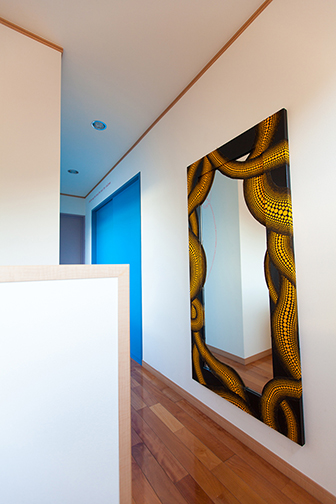
Mirror by Kusama Yayoi; photo by Takeda Yosuke
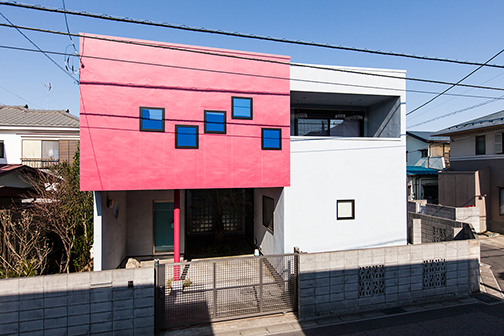
House designed by Dominique Gonzalez-Foerster; photo by Takeda Yosuke

Fusuma-e painted by Nara Yoshitomo; photo by Takeda Yosuke
Nanjo: Japan has a system of public support for the arts, but there are cases in which the rules and regulations involved inhibit creative activity. I think the biggest gift of freedom to an artist is to buy their work, which also contributes to their reputation. There are also examples, like Australia and Canada, where the government has created art banks that are actively buying the work of young artists and loaning it for display in public buildings and corporate campuses.
Miyatsu: Compared to China, Taiwan, or Indonesia, there are vastly fewer collectors in Japan. In the past, powerful businessmen like Matsukata Kojiro and Ishibashi Shojiro bought the advanced art of their day, such as the Impressionists. But there are very few people like them among the wealthy younger generation of today. There used to be a value system that basically said you weren’t fit to be a financier if you didn’t practice the tea ceremony, and people like Ishibashi donated money to build a national museum, but that’s gone now, and I think the sense that people of means should become custodians of culture has almost evaporated. After World War II, education changed and a homogenous egalitarianism became the norm—and perhaps we lost the strengths of Japanese like these men. After all, isn’t art really a celebration of difference?
Nanjo: During the oil shocks of the 1970s and the collapse of the bubble economy in the 1990s there were big losses in the art market, and I think people became wary of buying art. Art has a capitalist aspect to it, with support from wealthy patrons for artists whose reputations are not yet established. If the state attempts to use public funds to support such artists, things often get bogged down in arguments over whether the artists deserve such support, so it is a lot easier for new art to be fostered in countries where wealthy collectors make quick decisions about how to spend their own money.
The Booming Asian Art Market
Nanjo: n this respect the art market in the developing countries of Asia is booming. Some curators in the West have begun to notice developments in contemporary art in Asia, andinternational exhibitions have begun to look toward Asia. A massive market has developed from China through India to the Middle East, and right now Indonesia is hot. What’s interesting is that the museums in Indonesia are barely functional, but there are plenty of collectors, and art is supported by private capital. Wealthy people are not dependent on public funds; they buy up what they like, and build private galleries in their homes. In other words, they are creating their own system. In contrast, in Japan lots of people go to art museums, but a culture of art purchasing has not developed, so the market is very small.
Miyatsu: It may be that Indonesia is now experiencing the transition to modernity that Japan experienced a while ago. Or perhaps it’s that the modern and the contemporary have fused there into something even more powerful.
Nanjo: There’s a strong curiosity there for things like contemporary art that no one has seen before, and with the rapid growth of Indonesia’s domestic economy, young entrepreneurs are becoming collectors and buying local art. As a result, works by emerging artists are suddenly being bought and sold for hundreds of thousands of dollars. Overseas buyers are beginning to get into this market. Art always moves in tandem with the economy. Singapore, with a stable economy, is making art a national policy priority. In comparison with Japan, the status of contemporary art in South Korea is high, and in Taiwan popular awareness of contemporary art is well developed. Thus, it feels like there may be a uniquely Asian aesthetic in the making.
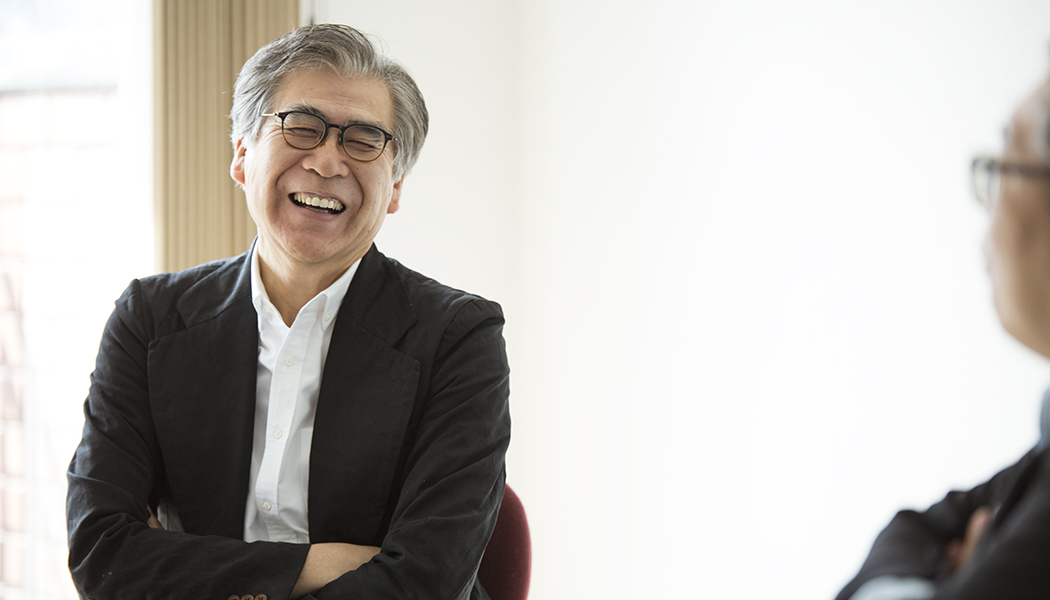
Miyatsu: With their economic power, Chinese buyers bid up the prices of works by Chinese artists at international auctions. And in Singapore and Beijing museums of contemporary art have hired famous European and American directors, lending their art theoretical cachet.
Nanjo: If 1.3 billion people in China say they like something, it automatically creates a different index of value from that of Europe and America—but without being assigned meaning and value in Western terms, it is difficult to achieve global standards. Being recognized by people from other countries, proving that one’s work has international value, is the next challenge. And that is something Japan remains very weak at doing.
Reaching a Global Audience
Miyatsu: Japan has Asian modern and contemporary art collections, like that of the Fukuoka Asian Art Museum, that are among the best in the world, but there is little appreciation of what a treasure this is, in part because Japan has not done a good job of communicating it to the rest of the world.
Nanjo: Despite the achievements of contemporary Japanese art, it is difficult to get it on the map internationally without more interpretive commentary on it in English. Recently, at a meeting at the Agency for Cultural Affairs, I proposed the creation of a translation fund to support such commentary. Most Japanese artists are not that adept at English, and some are probably satisfied with making a name for themselves domestically. But contemporary art, and the artists involved in it, are naturally looking for an impact beyond Japan. It is quite rare, but a handful of Japanese artists has achieved international acclaim: Kusama Yayoi, Nara Yoshitomo, Murakami Takashi, Sugimoto Hiroshi, and Nawa Kohei come to mind. Even among foreign artists, few have succeeded in mounting solo exhibitions at major European and American museums the way Kusama has.
Miyatsu: Kusama did not receive proper critical recognition back when white male artists such as Andy Warhol dominated the Western art scene. But beginning in the late 1990s major American museums began to feature exhibitions spotlighting Kusama’s early work, and this led to a reevaluation of her in Japan as well. In other words, Japan still follows standards of value established in Europe and America.
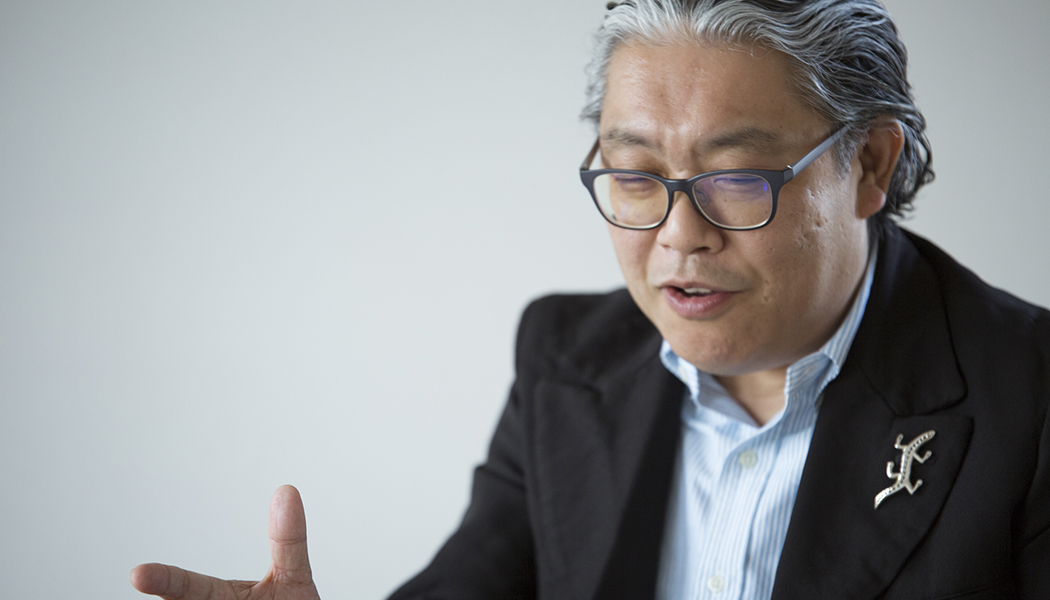
Nanjo: At the end of the 1980s, when I was introducing Japanese contemporary art to foreign audiences, I deliberately picked works that did not conform to European and American standards. I picked Japanese artists who no one had heard of overseas, to see what would happen when they were presented in America—artists such as Morimura Yasumasa, Miyajima Tatsuo, Dumb Type, Tsubaki Noboru, and Ohtake Shinro—and they were very well received. I still wonder why some artists win this kind of acclaim while others do not, but one of the things that makes contemporary art interesting is that element of unpredictability.
Miyatsu: Murakami Takashi has achieved enormous success by coining a catchy term for his work in English—his “Superflat” concept—and teaching a world audience that Japan literally has had a different perspective on things from the three-point perspective of Western art since the Renaissance.
Nanjo: We need more of that kind of strategy in Japan. We have a lot of what you might call good students, but very few people who can blaze their own trail. On the international scene what is necessary is not to play by the rules, but to transcend them.
Understanding the World Through Art
Miyatsu: In 1998, when you were commissioner for the first Taipei Biennial, there was a lot less communication between China and Taiwan, and it must have been quite difficult for you.
Nanjo: There was even some fear that China might attack Taiwan, and the only artist from China who was able to get an entry permit for Taiwan was Cai Guo-qiang, who was living in New York City at the time. And even in this atmosphere where we were half expecting paratroopers falling out of the sky, he did a piece that involved shooting a vast quantity of aerial fireworks from the Taipei Fine Arts Museum [laughs]. Before the event, the director of the museum was quite concerned that giving approval for Cai’s piece might cause an international incident. Yet to prevent him from doing it would mean that Taiwan was engaging in the same sort of censorship that China was. The only way to assert that Taiwan is a free country was to permit the piece to be performed. Contemporary art can become quite political in this way.
When I was working as the artistic director for the first Singapore Biennale, we were dealing with a country whose censorship was so strict that some of its artists emigrated, so exhibiting certain works became controversial and this was a real headache. Japanese curators selected works they thought were harmless enough, but which certain foreign governments seemed to see as problematic. Some amount of explanation was required before we could figure out what was the problem. But as a result of such experiences, we refine our awareness of the perspectives of others, and the works themselves are strengthened by being judged from various perspectives rather than being confined to Japan.
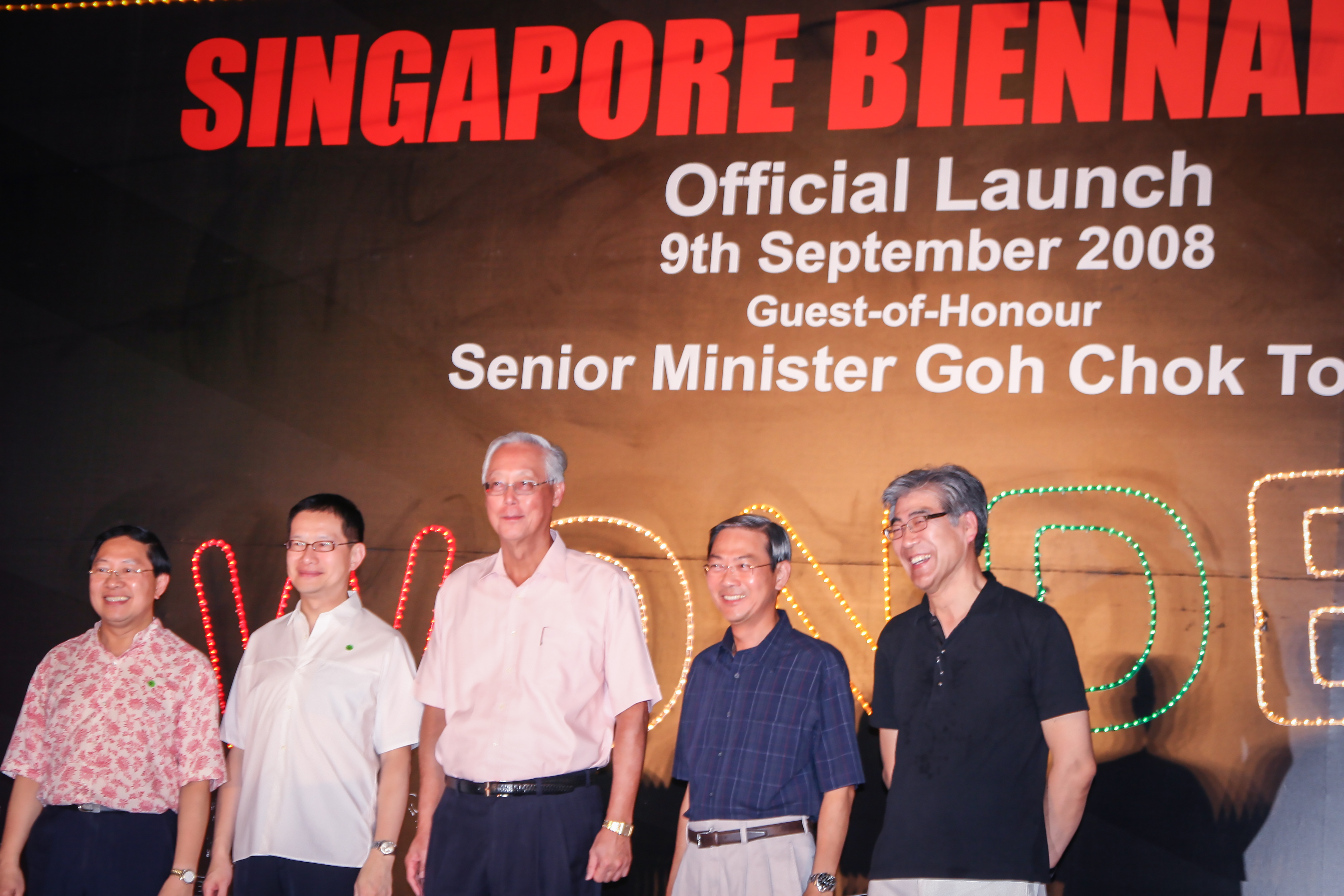
In 2008, Nanjo was reappointed artistic director of the second Singapore Biennale (at far right).
Miyatsu: The more you get to know the art scene, the more hair-raising stories you hear about the entanglements with politics and economics. In 2012, about the time that the anti-Japanese movement began to erupt in China, I was invited by a well-known Guangzhou gallery to give a talk about an exhibition of the works in my collection. I decided to go, and on the way to the gallery narrowly escaped a large crowd of demonstrators before arriving unscathed. Inside, I found an enthusiastic audience of some 60 people waiting to hear my talk. The majority of the works I had selected for this exhibition were by Chinese artists. It was a strange scene—outside in the streets an anti-Japanese demonstration was raging, inside the gallery we were engaged in a friendly Sino-Japanese cultural exchange. I had a strong feeling at that moment that it was art that made this possible. And in this sense, I am convinced that contemporary art can be an effective tool for helping Japan become a more global society.
Nanjo: By actually meeting with artists, curators, and collectors abroad, you begin to get a closer look at the domestic situations and mentality of people in different countries, so I think contemporary art can provide an interesting layer in our understanding of the world.
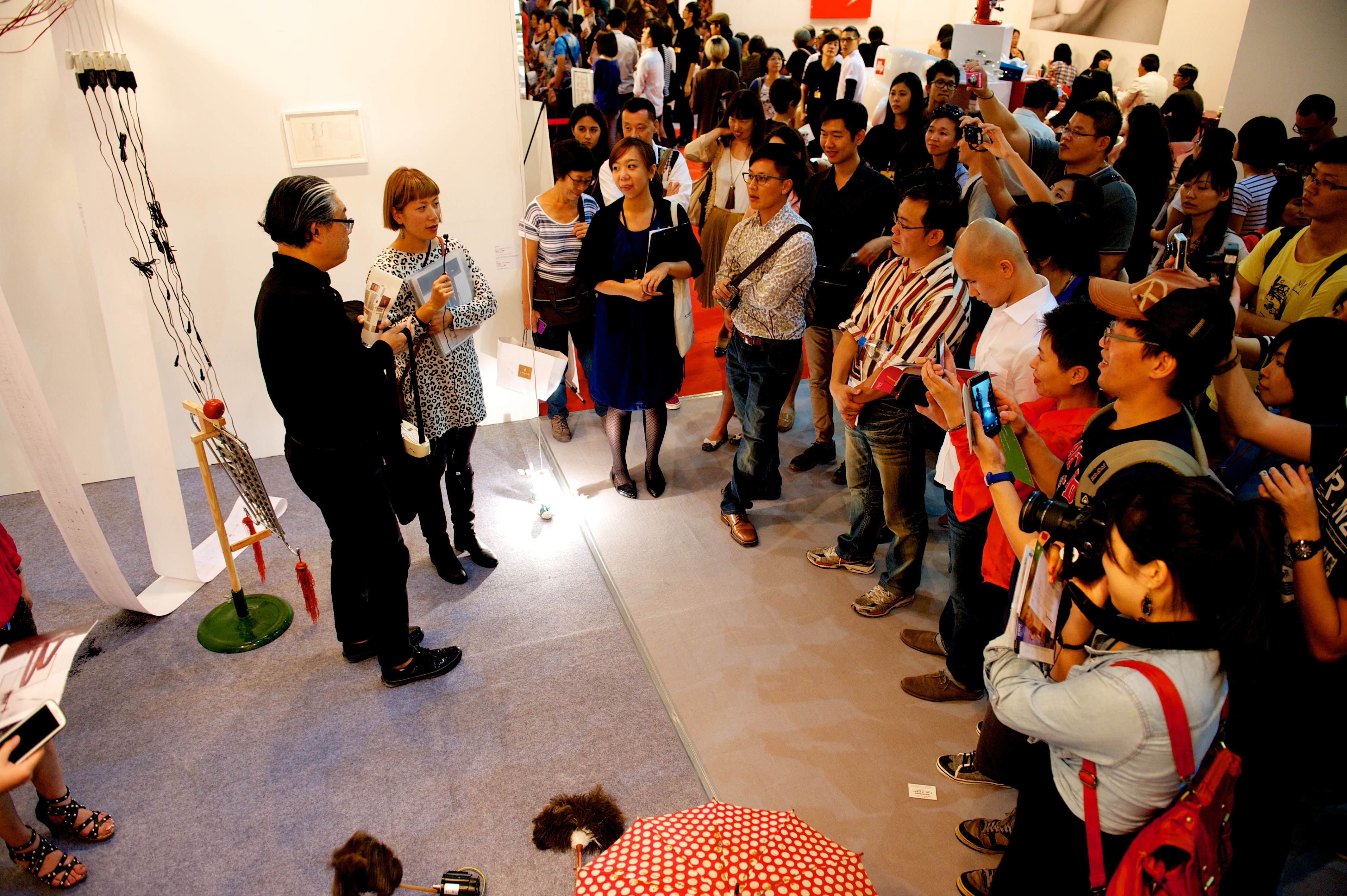
Miyatsu giving a guided tour at Art Taipei in 2013.
This dialogue was conducted in Japanese in March 2015.
Editing: International House of Japan, Program Dept.
Photographer (dialogue): Sato Nobutaka
Special thanks to Tendo Co., Ltd.
©2019 International House of Japan
To view other articles, click here.
